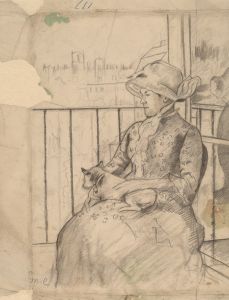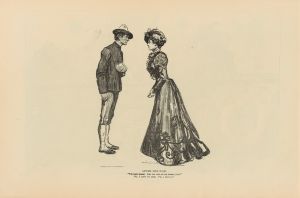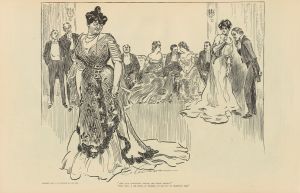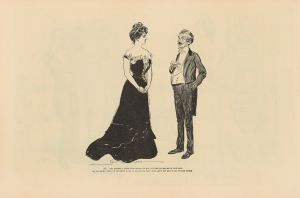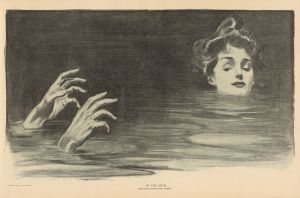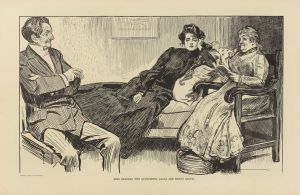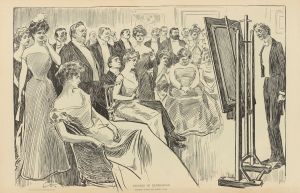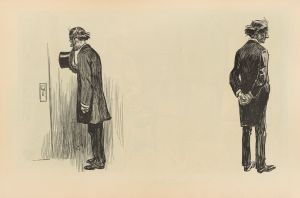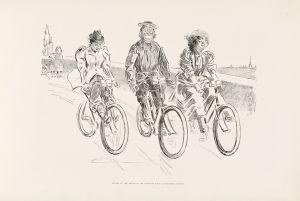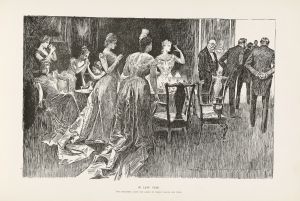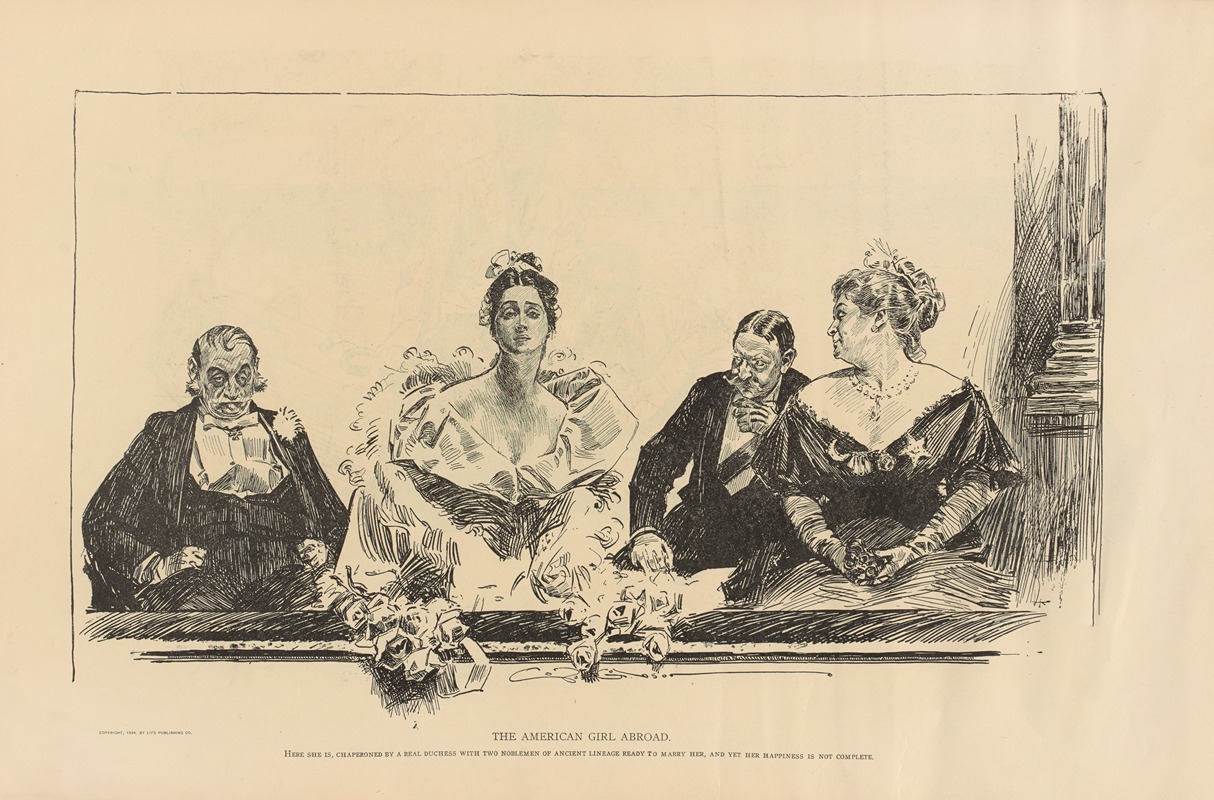
The American girl abroad
A hand-painted replica of Charles Dana Gibson’s masterpiece The American girl abroad, meticulously crafted by professional artists to capture the true essence of the original. Each piece is created with museum-quality canvas and rare mineral pigments, carefully painted by experienced artists with delicate brushstrokes and rich, layered colors to perfectly recreate the texture of the original artwork. Unlike machine-printed reproductions, this hand-painted version brings the painting to life, infused with the artist’s emotions and skill in every stroke. Whether for personal collection or home decoration, it instantly elevates the artistic atmosphere of any space.
Charles Dana Gibson was an influential American illustrator, best known for creating the iconic "Gibson Girl," a representation of the idealized American woman at the turn of the 20th century. One of his notable works is "The American Girl Abroad," which captures the essence of the Gibson Girl in an international setting. This illustration is part of a larger body of work that reflects the cultural and social dynamics of the era.
"The American Girl Abroad" depicts a young American woman traveling in Europe, a theme that was popular during the late 19th and early 20th centuries as more Americans began to travel overseas. This period saw a rise in the popularity of the "Grand Tour," a traditional trip around Europe undertaken by mainly upper-class young men and women to finish their education. However, Gibson's illustration focuses on the modern American woman, characterized by her independence, confidence, and style.
Gibson's work often portrayed women who were both fashionable and assertive, challenging the traditional roles of women during that time. The Gibson Girl was not just a fashion icon but also a symbol of the changing roles of women in society. She was depicted as educated, athletic, and socially active, embodying the spirit of the Progressive Era, which sought to address issues of social justice and reform.
In "The American Girl Abroad," the Gibson Girl is shown engaging with her surroundings, often depicted in various European settings such as Paris or London. These illustrations highlight her adaptability and sophistication, as well as her ability to navigate different cultural landscapes with ease. The artwork reflects the growing influence of American culture abroad and the increasing mobility of American citizens.
Gibson's illustrations were widely published in magazines such as Life, Harper's Weekly, and Scribner's, reaching a broad audience and solidifying the Gibson Girl as a cultural icon. His work played a significant role in shaping public perceptions of American women and their place in society. The Gibson Girl became a standard of beauty and behavior, influencing fashion and social norms of the time.
"The American Girl Abroad" is a testament to Gibson's skill in capturing the zeitgeist of his era. His illustrations are characterized by their detailed line work and expressive characters, which convey a sense of movement and life. Gibson's ability to blend humor with social commentary made his work both entertaining and thought-provoking.
Overall, "The American Girl Abroad" is more than just an illustration; it is a cultural artifact that provides insight into the changing roles of women and the expanding influence of American culture in the early 20th century. Charles Dana Gibson's work continues to be celebrated for its artistic merit and its impact on American society, offering a window into the past and the evolving narrative of women's independence and empowerment.







